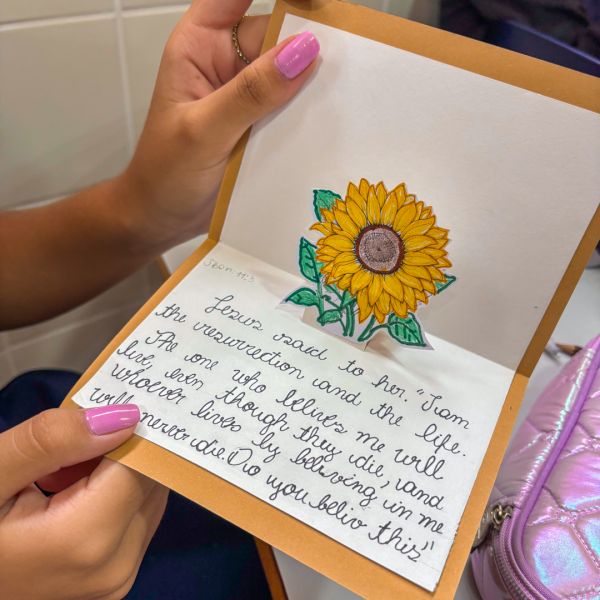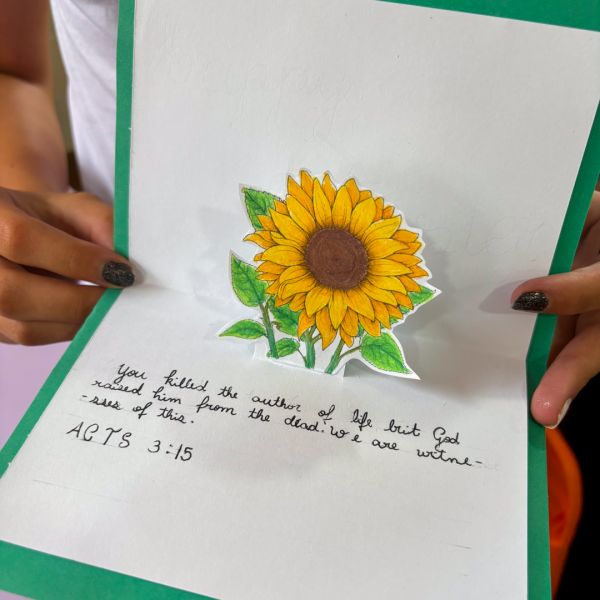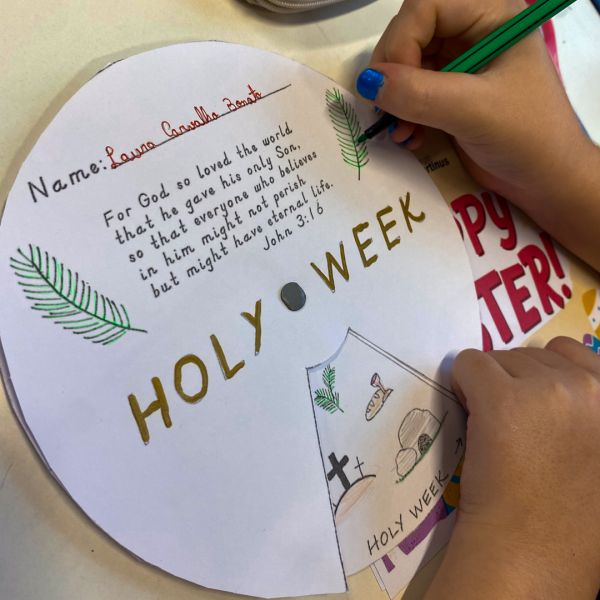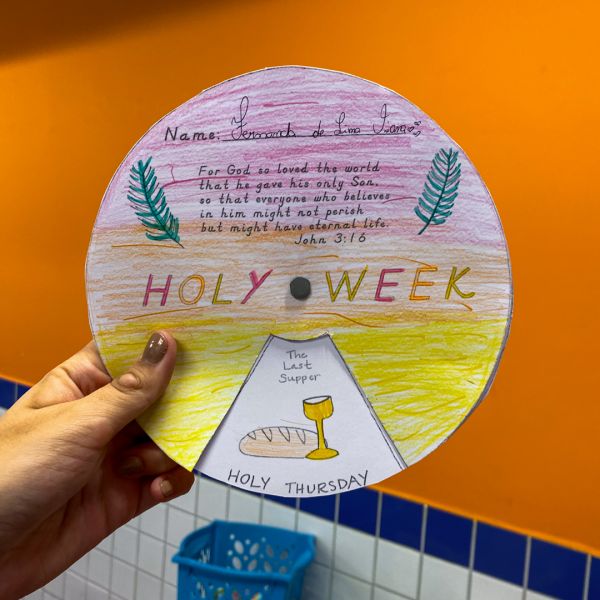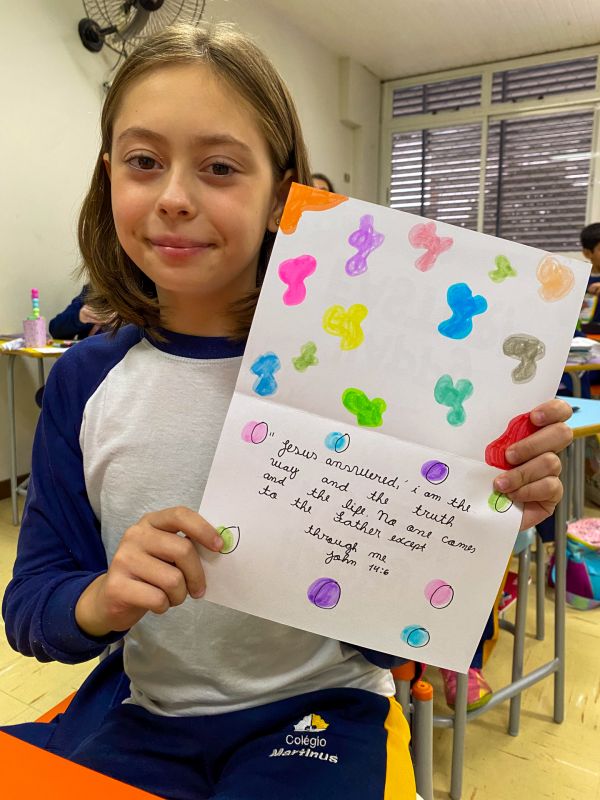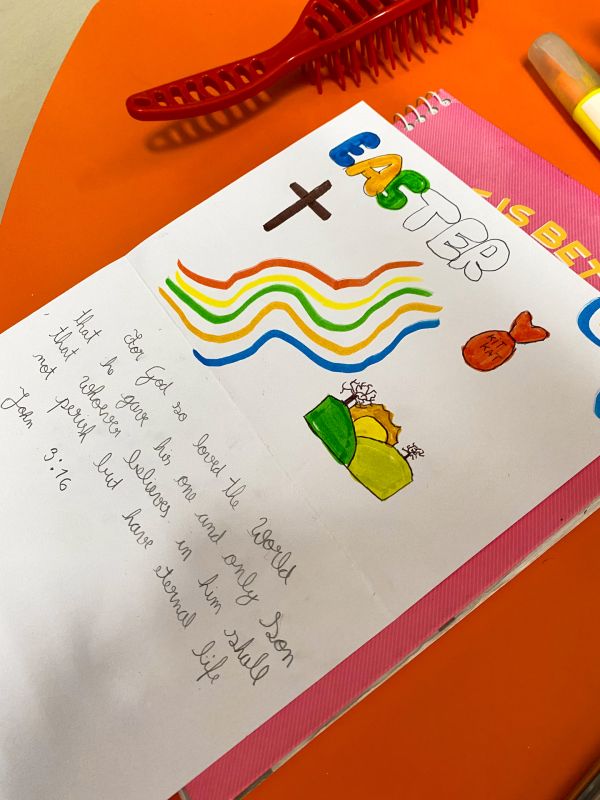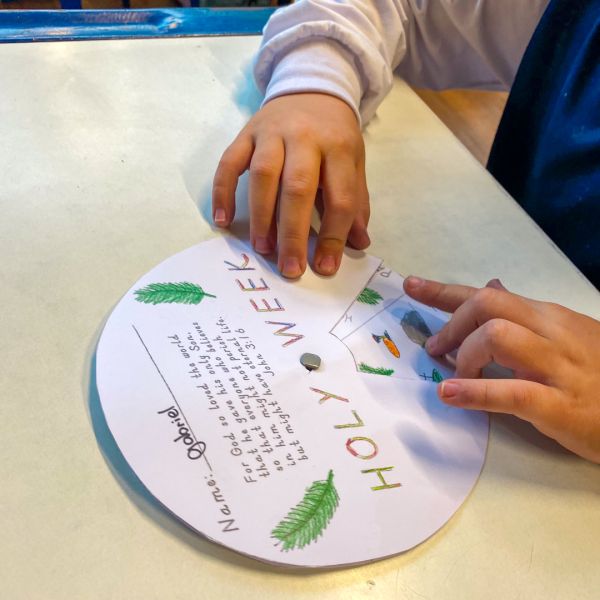Celebração da Páscoa Martinus nas aulas de Língua Inglesa: Tradições Milenares e Símbolos Significativos
Na atmosfera vibrante da Páscoa, os corredores do Martinus ganham vida com cores e alegria, enquanto os alunos participam de atividades que celebram essa ocasião especial. Professores e funcionários se unem para criar um ambiente acolhedor e festivo, onde os alunos podem aprender sobre as tradições da Páscoa em diferentes culturas e refletir sobre os valores de solidariedade e renovação que essa época do ano representa.
As nossas celebrações incluem atividades educativas, como a exploração do significado dos símbolos pascais, confecção de cartões, reflexões e contação de histórias, promovendo não apenas o aspecto lúdico, mas também o enriquecimento cultural e espiritual dos estudantes.
A Páscoa, que tem profundas raízes históricas e religiosas, é marcada por uma rica tapeçaria de símbolos que encapsulam significados espirituais e culturais. Entre esses símbolos estão o cordeiro, o girassol, e o pão e vinho, cada um carregando uma carga simbólica única e profunda, enriquecendo a celebração da Páscoa.
O cordeiro, há séculos, é um emblema de sacrifício e redenção. Ele evoca a narrativa bíblica do Cordeiro de Deus, que simboliza o sacrifício de Cristo para a redenção da humanidade. Essa imagem aparece em várias ocasiões na Bíblia, tanto no Antigo quanto no Novo Testamento. Representa, além disso, “a fragilidade do “filho de Deus”, que trouxe a “luz”, mas foi morto por aqueles a quem veio salvar” (P. Jorge Schieferdecker).
O girassol, com sua natureza majestosa e vívida, também tem um lugar especial na celebração da Páscoa. Este símbolo radiante é frequentemente associado à ressurreição e renascimento, refletindo a crença na vida renovada que a Páscoa representa. Sua capacidade de seguir a trajetória do sol, virando-se em direção à luz, é vista como uma metáfora poderosa para a jornada espiritual e a busca pela luz divina.
Além disso, o pão e o vinho desempenham um papel central nas celebrações pascais em muitas tradições religiosas, mais notavelmente na Eucaristia cristã. O pão, simbolizando o corpo de Cristo, e o vinho, simbolizando seu sangue, são compartilhados em comunhão durante os serviços religiosos, fortalecendo os laços espirituais e lembrando os fiéis do sacrifício de amor que é o cerne da fé cristã.
Considerando e pensando em toda a representação da Páscoa, os alunos do Fundamental II escolheram o girassol (the sunflower) como símbolo para enfeitar seus cartões nessa data tão importante para os cristãos. A confecção do cartão foi feita à mão (handmade) e as mensagens escolhidas foram versículos bíblicos que relembram o sacrifício de Cristo, tais como Acts 3:15; Matthew 28:5-6; John 11:25-26.
Assim, enquanto nos preparamos para mais uma Páscoa, é importante lembrar o significado por trás desses símbolos antigos. Eles nos convidam a refletir sobre os temas universais de sacrifício, renovação e esperança que transcendem fronteiras culturais e religiosas, unindo-nos em nossa busca por significado e transcendência.
Que nesta Páscoa possamos encontrar inspiração e consolo na rica herança de nossas tradições e símbolos, renovando nossa fé e nosso compromisso com valores de amor, compaixão, fé e unidade.
Celebration of Easter Martinus in English Language Classes: Millennial Traditions and Significant Symbols
In the vibrant atmosphere of Easter, the halls of Martinus come alive with color and joy as students participate in activities that celebrate this special occasion. Teachers and staff come together to create a welcoming and festive environment where students can learn about Easter traditions in different cultures and reflect on the values of solidarity and renewal that this time of year represents.
Our celebrations include educational activities, such as exploring the meaning of Easter symbols, making cards, reflections and storytelling, promoting not only the playful aspect, but also the cultural and spiritual enrichment of students.
Easter, which has deep historical and religious roots, is marked by a rich tapestry of symbols that encapsulate spiritual and cultural meanings. Among these symbols are the lamb, the sunflower, and the bread and wine, each carrying a unique and deep symbolic charge, enriching the celebration of Easter.
The lamb, for centuries, has been an emblem of sacrifice and redemption. It evokes the biblical narrative of the Lamb of God, which symbolizes Christ's sacrifice for the redemption of humanity. This image appears on several occasions in the Bible, both in the Old and New Testaments. It represents, moreover, "the fragility of the 'son of God', who brought the 'light' but was killed by those whom he came to save" (Pastor George Schieferdecker).
The sunflower, with its majestic and vivid nature, also has a special place in the celebration of Easter. This radiant symbol is often associated with resurrection and rebirth, reflecting the belief in renewed life that Easter represents. Their ability to follow the path of the sun, turning towards the light, is seen as a powerful metaphor for the spiritual journey and the search for divine light.
In addition, bread and wine play a central role in Easter celebrations in many religious traditions, most notably in the Christian Eucharist. The bread, symbolizing the body of Christ, and the wine, symbolizing his blood, are shared in communion during religious services, strengthening spiritual bonds and reminding the faithful of the sacrifice of love that is at the heart of the Christian faith.
Considering and thinking about the entire representation of Easter, the students of Elementary school chose the sunflower as a symbol to decorate their cards on this date so important for Christians. The card was made by hand and the messages chosen were Bible verses that recall Christ's sacrifice, such as Acts 3:15; Matthew 28:5-6; John 11:25-26.
So, as we prepare for Easter, it's important to remember the meaning behind these ancient symbols. They invite us to reflect on the universal themes of sacrifice, renewal, and hope that transcend cultural and religious boundaries, uniting us in our search for meaning and transcendence.
May this Easter we find inspiration and solace in the rich heritage of our traditions and symbols, renewing our faith and our commitment to values of love, compassion, faith, and unity.




